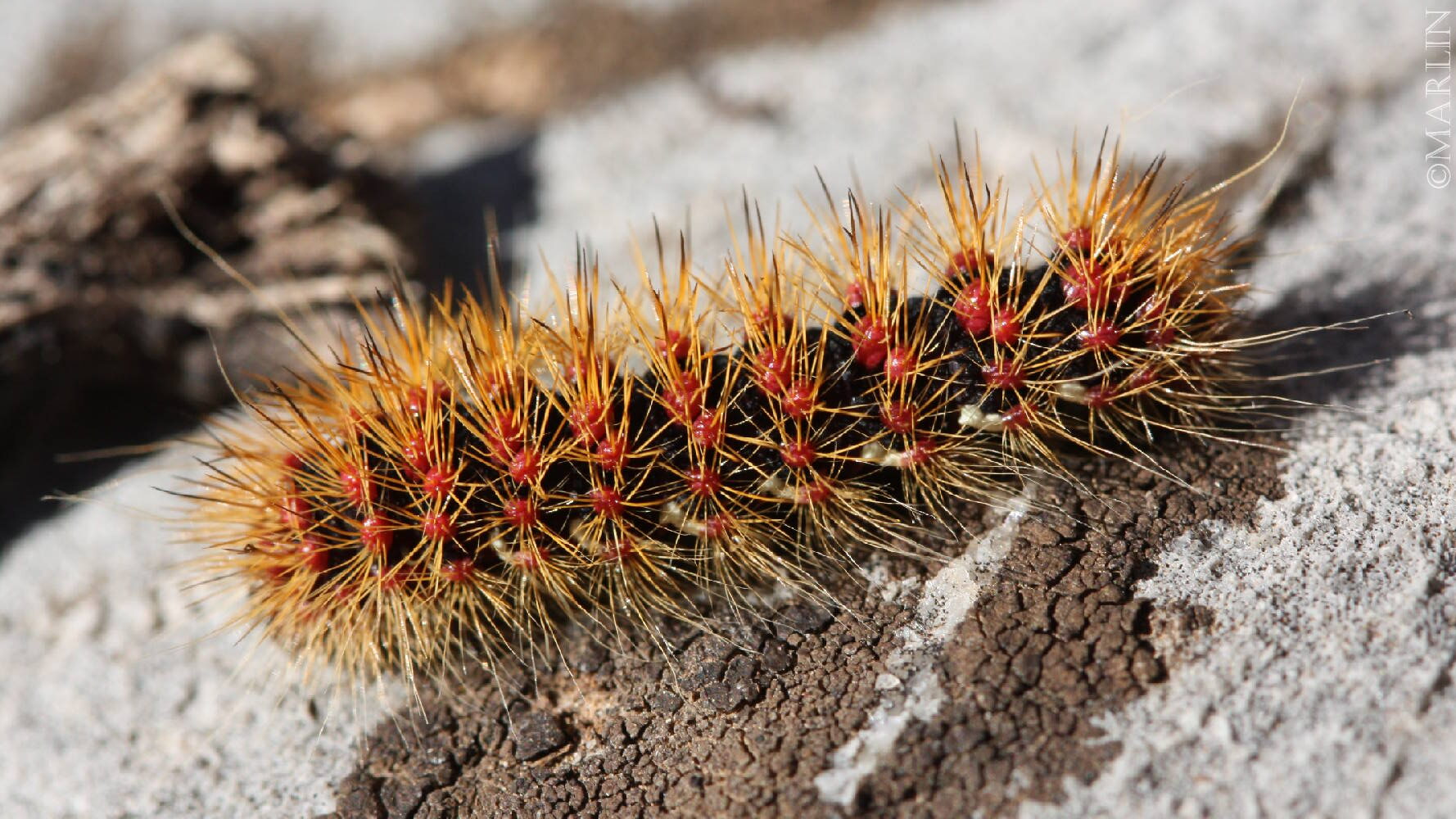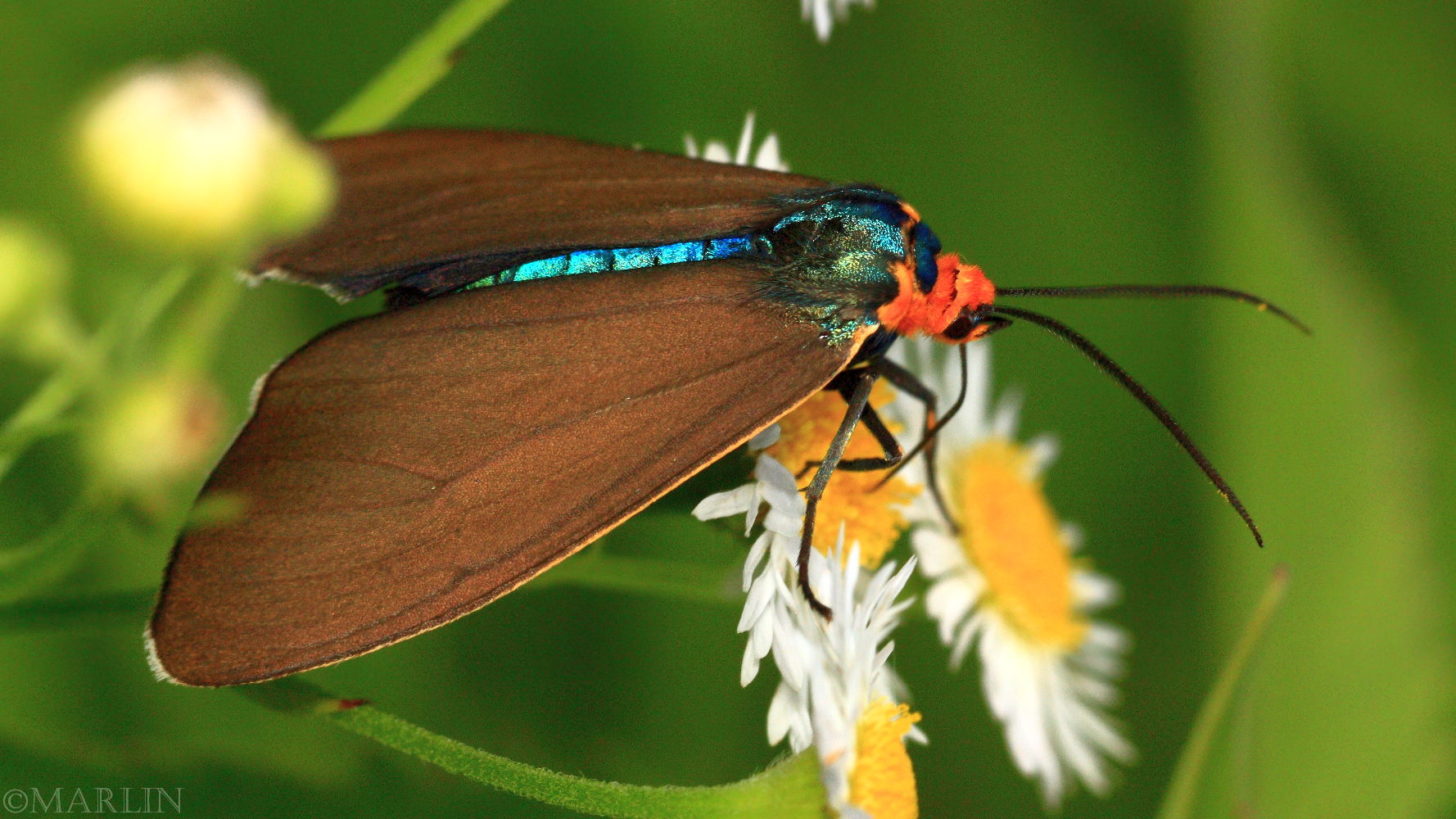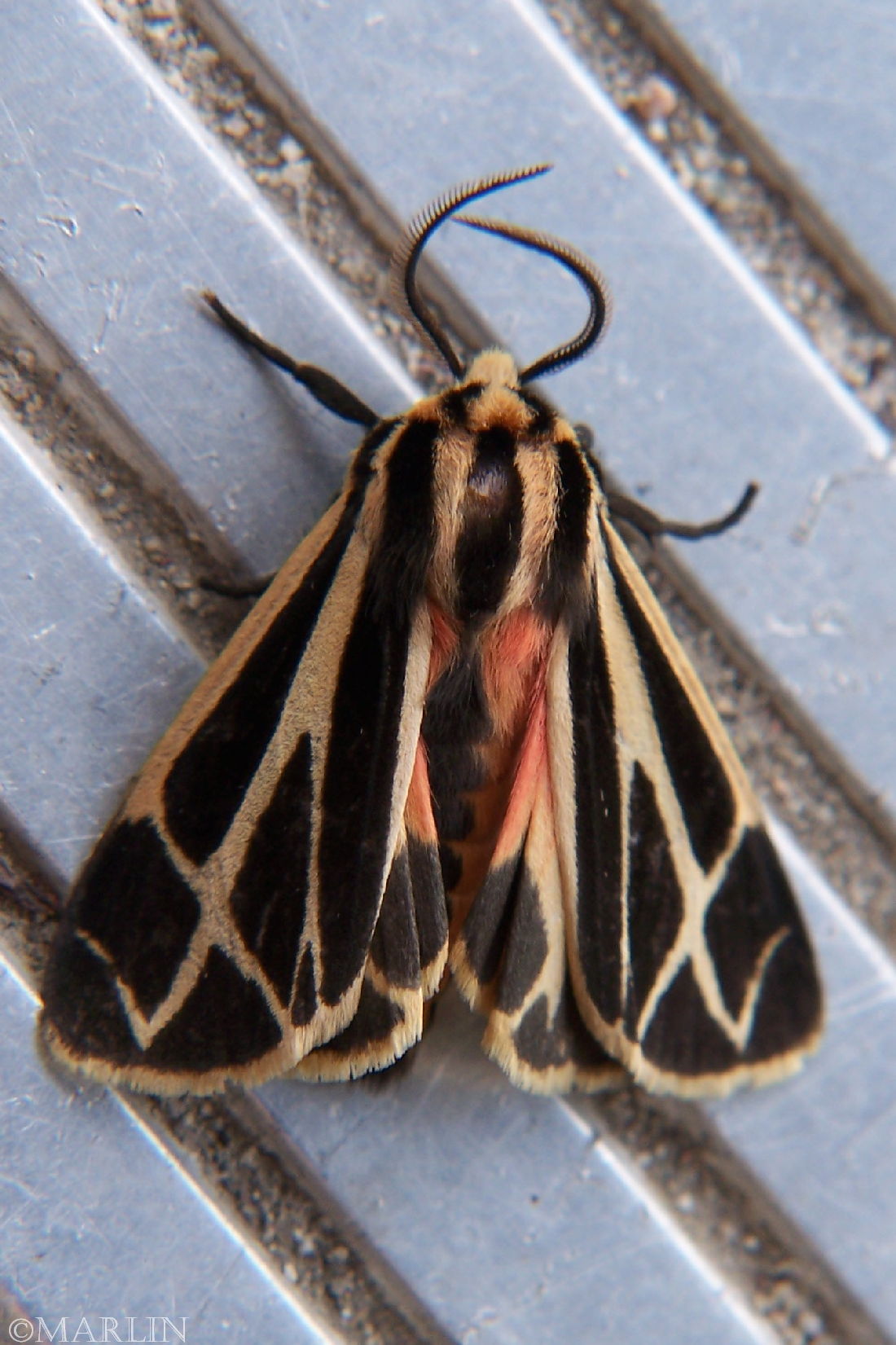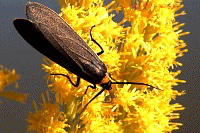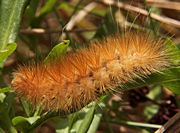Subfamily Arctiinae
Tiger and Lichen Moths
Dagger moth caterpillar found at 9650 ft. Flat Tops Wilderness, Colorado. Acronicta barnseii or lupini [3]
Formerly family Arctiidae, this is a large and diverse family of moths with around 11,000 species in three tribes worldwide [2].
This large assemblage also includes footmen, Haploa, and ctenuchid moths.
The most distinctive feature of the family is a tymbal organ on the metathorax which uses a thin membrane to produce ultrasonic countermeasures against their chief predator’s (bats) echolocation system.
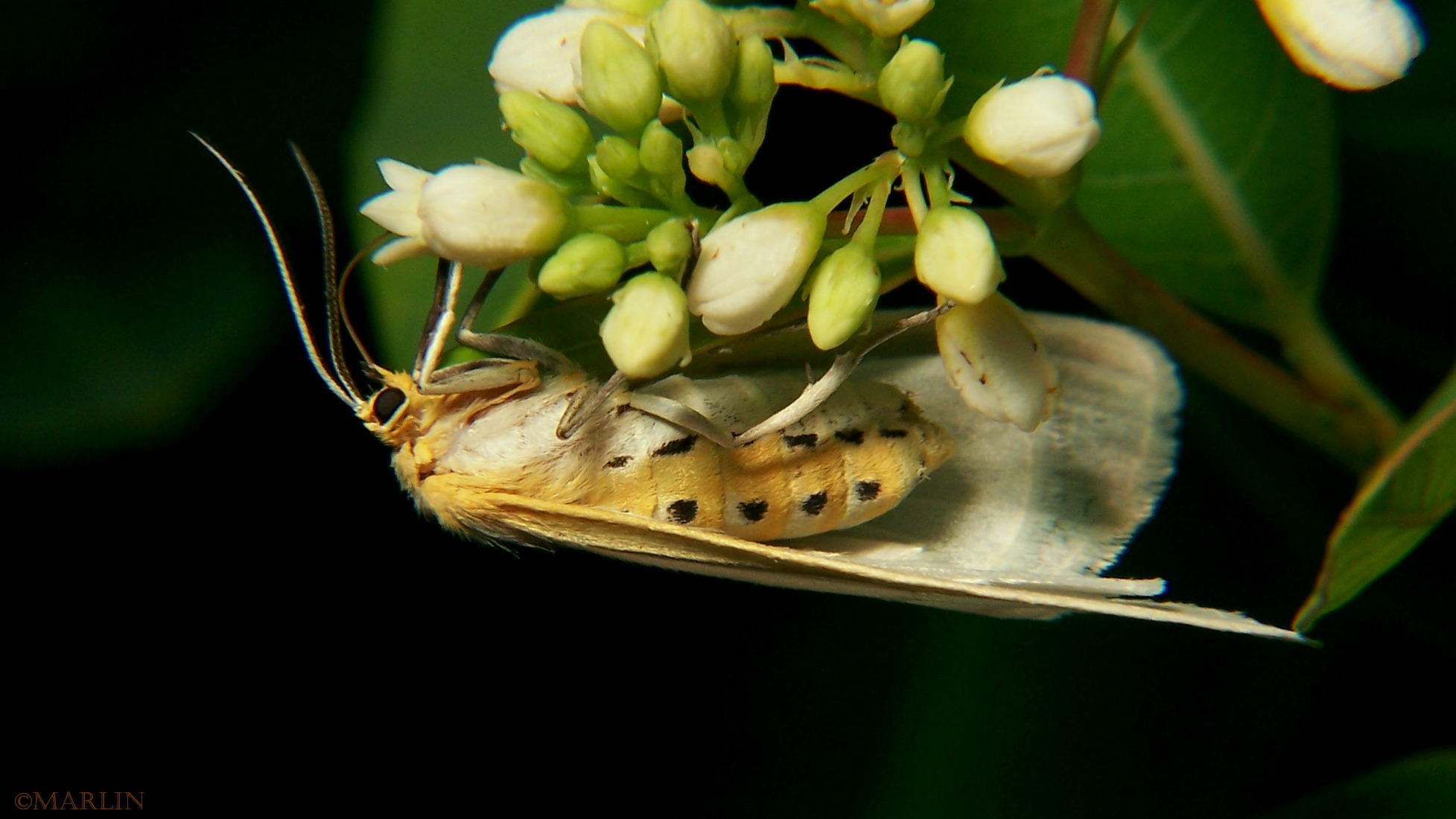 Delicate Cycnia Moth
Delicate Cycnia Moth
Larvae of some species use sound along with color to advertise their inedibility; many species acquire chemical defenses from their hostplants e.g., milkweeds or dogbane.)
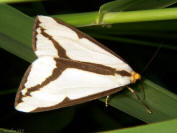 Haploa lecontei |
Haploa reversa |
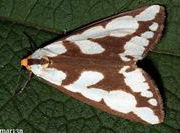 Haploa confusa |
 Oregon Cycnia Moth |
 Banded Woolly Bear Caterpillar
Banded Woolly Bear Caterpillar
Common folklore has it that the forthcoming severity of a winter can be predicted by the amount of black on the Isabella tiger moth’s caterpillar, the most familiar woolly bear in North America; however the relative width of the black band varies among instars, not according to weather (Wagner 2005).
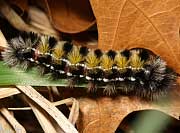
Virginia Ctenuchid Caterpillar
References
1. United States Geological Survey, Caterpillars of Eastern Forests
2. Bugguide.net “Subfamily Arctiinae”
3. Bugguide.net “Dagger Moth Caterpillar”

